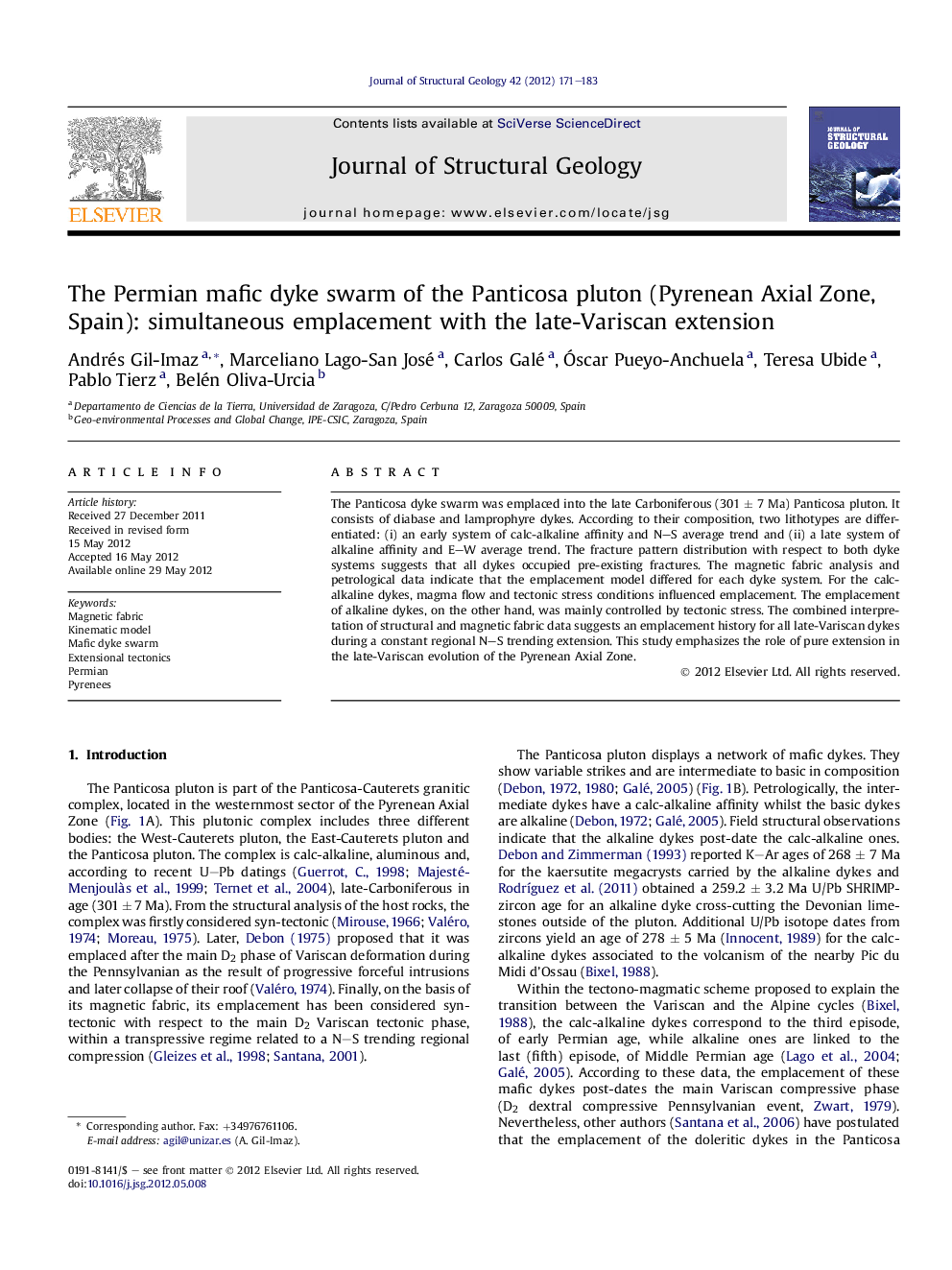| Article ID | Journal | Published Year | Pages | File Type |
|---|---|---|---|---|
| 4733414 | Journal of Structural Geology | 2012 | 13 Pages |
The Panticosa dyke swarm was emplaced into the late Carboniferous (301 ± 7 Ma) Panticosa pluton. It consists of diabase and lamprophyre dykes. According to their composition, two lithotypes are differentiated: (i) an early system of calc-alkaline affinity and N–S average trend and (ii) a late system of alkaline affinity and E–W average trend. The fracture pattern distribution with respect to both dyke systems suggests that all dykes occupied pre-existing fractures. The magnetic fabric analysis and petrological data indicate that the emplacement model differed for each dyke system. For the calc-alkaline dykes, magma flow and tectonic stress conditions influenced emplacement. The emplacement of alkaline dykes, on the other hand, was mainly controlled by tectonic stress. The combined interpretation of structural and magnetic fabric data suggests an emplacement history for all late-Variscan dykes during a constant regional N–S trending extension. This study emphasizes the role of pure extension in the late-Variscan evolution of the Pyrenean Axial Zone.
